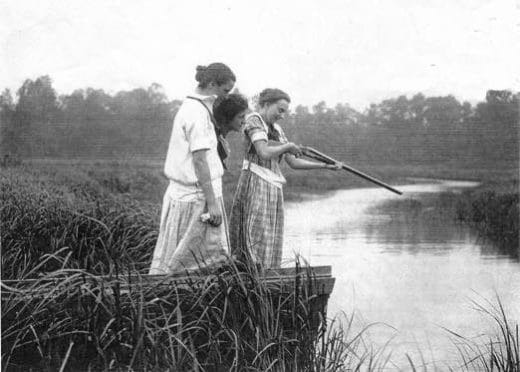By Katalin Gyurián Toth
Where did our fear of sharks come from? Jaws, Sharknado, Deep Blue Sea, and the cult following of Shark Week documentaries are evidence of our shark obsession.
Some people believe our fear of sharks began with Steven Spielberg’s 1975 movie Jaws (based on Peter Benchley’s 1974 book of the same name). But it started with several New Jersey shark attacks in 1916. A series of horrific events changed our perception of sharks and instilled a sense of fear of our waters forever.
The Matawan Historical Society along with the Borough of Matawan and the Chamber of Commerce held a centennial anniversary event in July to commemorate the 1916 shark attacks.
Before that summer, residents never feared entering the waters of the Jersey Shore, let alone the inland creeks of rural towns. However, unprecedented shark attacks changed the way we perceived our waters. The attacks also ignited our fascination with sharks.
SHARK ATTACKS OF 1916
During the heat wave of July 1916, people rushed to cool down in the alluring waters of their backyards. None of them expected to lose their lives to a shark.
- Charles Epting Vasant, a 25-year-old businessman from Philadelphia, was the first victim. On Jul 1, he was swimming 50 yards offshore in Beach Haven when a shark attacked him, and he later died from blood loss.
- Charles Bruder, a 27-year-old Swiss bell captain at the Essex and Sussex Hotel in Spring Lake, lost both his legs in an attack in Spring Lake on July 6. The Washington Post reported “something in the .. attacked him and tore his limbs from the body.” He also died from blood loss.
- Lester Stillwell, 11, was swimming with his friends in Matawan Creek, just off the Wycoff Dock. Lester’s friends witnessed the fatal attack, and they fled the creek running and screaming. According to the Asbury Park Evening Press, the boy’s body was so “horribly chewed by the sea wolf,” that the sight made his mother faint.
- Stanley Fisher, a popular local business owner, heroically tried to find Stillwell’s body. In his book, Twelve Days of Terror, author Richard G. Fernicola interviewed a witness who said Fisher was heard saying, “I’ve got the boy, but the shark’s got me!” Fisher was bitten in the thigh and died at the Long Branch Monmouth Memorial Hospital.
The last victim was Joseph Dunn, a 12-year-old from New York City who was visiting his aunt in Cliffwood Beach with his brother, Michael. The two boys joined some friends in the creek for a swim. The boys heard someone yell “shark” and headed to the dock ladder as fast as they could. Joseph, who was the farthest from the ladder, was attacked by the shark and soon it became a tug-of-war between the shark and Dunn’s friends.
In Michael Capuzzo’s book, Close to Shore, Joseph was quoted as saying, “Suddenly I felt a tug, like a big pair of scissors pulling at my leg and bringing me under…the teeth of the shark evidently clamped down on my leg quickly, and I thought it was off. I felt as if my leg had gone.”
Luckily, there were people nearby who were able to help pull Joseph to safety. The Dunn brothers were taken to St. Peter’s Hospital in New Brunswick and Joseph survived.
THE AFTERMATH OF THE ATTACKS
There were fewer bathers along the coast following the five attacks. Governor James Fielder had steel wire mesh installed around popular swimming locations.
Matawan Mayor Arris B. Henderson offered rewards for the capture of the killer shark from the creek. Matawan locals took dynamite to try to blast the shark themselves. Some even brought hunting rifles with them on their boats. Although hundreds of sharks were caught, no one could confirm if the infamous man-eater was one of them.
The panic spread nationwide, spurring the House of Representatives to allocate money to educate residents on shark threats. The Coast Guard also patrolled East Coast beaches.
Shark sightings increased from Asbury Park to Coney Island. Headlines such as, “U.S. War on Sharks” and “Uncle Sam’s Latest Crusade,” made front-page news in multiple American newspapers as well as in newspapers in London.
Before the attacks, no one perceived sharks as a threat. However, the summer of 1916 not only propelled New Jersey into the international spotlight, but the state was identified with the scariest shark attacks in history. Furthermore, sharks became symbols of danger in popular culture.
The world began to fear the waters, all because of what happened in New Jersey.
TEDxNavesink will explore all aspects of identity on April 8, 2017 at Monmouth University. Get your tickets today to be there and hear ideas with spreading.


